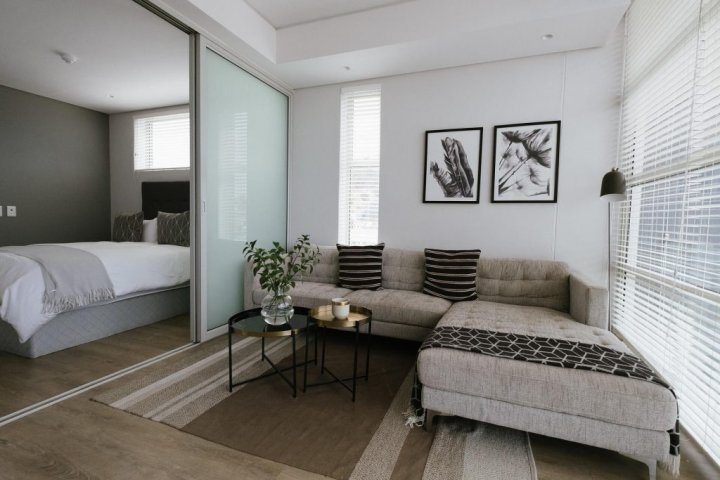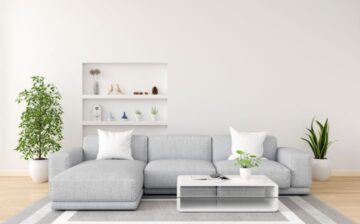Fabric selection is among the most important furniture upholstery choices that you will need to make when you buy upholstered furniture or reupholster an old piece of furniture.
The type of fabric you pick for an upholstery project will not just determine how it will look and feel.
It will also determine whether it is easy to care for your upholstered furniture, how much wear-and-tear it will stand up to, and the type of cleaning method that will need to be employed.
So, whether you buy a new sofa, reupholster antique furniture, or get living room furniture custom-designed by professional upholsterers, you need to know about upholstery fabrics to make an informed decision.
How Much Use Can Your Upholstery Fabric Stand Up To?
To know how much use a fabric can stand up to, you need to know about its double rub count.
Double rub is the industry standard to measure a fabric’s durability and abrasion resistance.
Upholstery fabrics with 7,000 to 10,000 double rubs are meant for light use. Such fabrics cannot withstand daily wear and tear.
Upholstery fabrics with 10,000 to 15,000 double rubs are meant for medium-duty in homes.
Upholstery specialists recommend fabrics with 15,000 to 30,000 double-rubs if the furniture is to be used in a residential setting. Sofas, chairs, etc. made with such fabrics will prove highly durable in a domestic setting.
Professional-grade upholstery fabrics are typically rated at 0.1m to 0.25m double rubs. Such fabrics will cost a lot more but also withstand heavy wear-and-tear in a public place.
Natural Upholstery Fabrics
Linen, cotton, wool, and leather are the natural furniture upholstery fabrics that you can consider for your upholstery project.
Linen is made from flax. It’s quite strong, soft, smooth, and lustrous. Linen upholstery fabric can resist soiling but it cannot withstand humidity. Linen can also wrinkle easily and is considered more suitable for use in formal environments. It is generally used in combination for cotton for better elasticity.
Durable and soft, cotton cannot resist soiling. It wrinkles easily. Since cleaning cotton with soap and water is easy and hassle-free, it’s considered suitable for slipcovers.
High-quality cotton or linen fabric can be is as luxurious as silk but also very costly. 100% pure cotton upholstery fabric is extremely rare. You will generally find cotton blends that contain up to 60% cotton. Such blends are stronger than pure, natural fibers.
Made from animal hair, wool is durable and resistant to wrinkling but somewhat starchy. Cleaning wool isn’t easy. Therefore, most wool upholstery fabrics available in the market are actually blends of multiple fibers.
Leather upholstery fabric is made from animal hide. It’s highly durable and easy to clean. There are different grades of leather fabrics available. Be sure to look for full grain leather for the best results.
Synthetic Upholstery Fabrics
Polyester, velvet, microfiber, rayon, and sunbrella are among the popular synthetic furniture upholstery fabrics.
Polyester is blended with cotton or wool to create upholstery fabric. This fabric is strong and easy to clean. It is also resistant to abrasion, fading, and wrinkling.
Velvet fabrics can be made from both synthetic and natural fibers. Such fabrics can be made from silk, cotton, or polyester. They are more durable than most of the natural fabrics, but they are more difficult to clean. Velvet upholstery fabrics are popular for their comfort as well as rich options they offer in texture and color.
Microfiber is knit blend polyester. It’s known for its softness. This upholstery durable fabric resists moisture and is easy to clean.
Rayon was first developed to be an imitation of cotton, linen, and silk. Although this upholstery fabric is highly durable, it wrinkles quite easily. For upholstery, this fabric is blended with other fibers.
An acrylic fabric, sunbrella is a great upholstery fabric for outdoor use. However, since this upholstery fabric is engineered to stand up to the elements, you can also consider it for indoor use if you want an upholstered sofa or chair to withstand sunlight, spills, etc.
Choose the Right Fabric
Before you start selecting colors and textures, make sure to choose the right upholstery fabric. Not doing so is one of the common people make when selecting upholstery fabrics.
Most upholstered furniture items you see at local stores use synthetic upholstery fabrics such as polyester, velvet, acetate, acrylic, microfiber, nylon, and olefin.
These fabrics vary in how they stand up to mildew, abrasion, sunlight, insects, soiling, etc.
Polyester, for instance, is resistant to sunlight, mildew, and insects. However, it can easily get soiled. Microfiber on the other hand, is quite resistant to wrinkling and soiling. Similarly, olefin isn’t a great choice if your upholstery is likely to be exposed to direct sunlight; otherwise, olefin is a good option as it can resist abrasion, mildew, and even chemicals.
Choose the Right Color
Choose a color according to the kind of ambiance you want to create in a living space.
If you are going to reupholster vintage furniture, consider new age colors to create an urban vibe.
Upholstery fabrics in light hues generally work well with large furniture items.
If you want to blend different colors and patterns in upholstery, pillows, cushions, etc., consider upholstery fabrics in solid hues.
It is a good idea to avoid trendy colors when you select upholstery fabrics. Trends come and go but upholstered furniture can last several years.
We hope you found this blog post: Know Your Fabric: A Brief but Effective Furniture Upholstery Guide, useful. Be sure to check out our post Your Guide to Choosing a Furniture Restorer for more great tips!
Have Experience in the Moving Industry? Want an Additional Income Stream? Work With All Around Moving!
Partner with us and we’ll help you make money. Click here to learn more.






